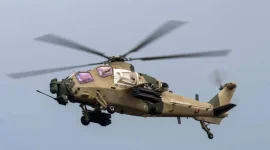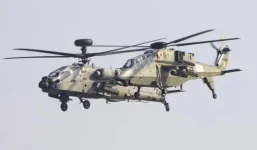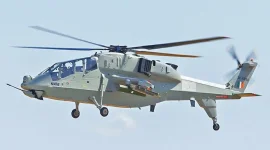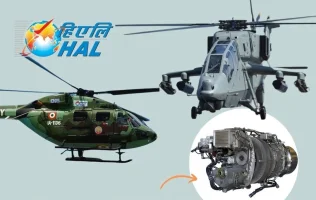- Views: 3K
- Replies: 21
The Indian Army's aviation modernization plans are currently navigating significant hurdles. Delays in receiving the first American-made Apache AH-64E attack helicopters coincide with stalled progress on the indigenous Indian Multi-Role Helicopter (IMRH) program, which awaits final government approval.
Amidst these challenges, the domestically developed Light Combat Helicopter (LCH) Prachand is emerging as a key focus for India's high-altitude combat aviation needs.
Delivery of the six potent Apache attack helicopters, ordered from Boeing in 2020, has been pushed back from late 2024 to early 2025. Boeing attributes this delay primarily to global supply chain disruptions. These helicopters, renowned for their anti-tank capabilities, are designated for deployment in India's desert regions, with the Army's 451 Aviation Squadron in Jodhpur prepared for their arrival.
In the interim, the Army continues to rely on its fleet of armed HAL Rudra helicopters (an armed version of the Dhruv utility helicopter) for attack roles, particularly in lower-altitude environments where the Apaches are expected to operate most effectively.
The Indian Air Force (IAF), having already integrated its 22 Apaches based in locations like Pathankot and Jorhat, mainly employs them in desert conditions. This deployment highlights the Apache's operational limitations at very high altitudes. Despite powerful engines and the capacity for heavy armaments like Hellfire missiles, the Apache's service ceiling of around 6,400 meters is less suited for the extreme altitudes encountered in regions like Ladakh and the Siachen Glacier, where the Army requires robust air support.
Meanwhile, the development of the 13-tonne IMRH by Hindustan Aeronautics Limited (HAL) is awaiting clearance from the Cabinet Committee on Security (CCS), a necessary step before proceeding further.
Designed to replace the extensive fleet of ageing Mi-17 transport helicopters across the armed forces, the IMRH is envisioned as a versatile platform for tasks including troop movement, air assault, and combat search and rescue. A total requirement of over 300 units is projected across the Army, IAF, and Navy, with a dedicated naval variant also planned.
HAL has completed crucial design stages and partnered with France's Safran for the helicopter's engine development. The advanced helicopter factory in Tumakuru is ready for production, but the project awaits the crucial CCS go-ahead, potentially delaying its first flight to 2027-28 and service entry into the early 2030s.
Significantly, HAL has confirmed it does not plan to develop a heavy attack helicopter based on the IMRH platform, similar in capability to the Apache. This decision stems from stated limited requirements for such a heavy platform from both the Army and the IAF. Sources indicate that the forces perceive limited operational utility for a dedicated heavy attack helicopter across India's varied terrain, preferring different solutions for diverse environments.
The IMRH, primarily designed for transport and utility with a focus on multi-role flexibility, has different payload capacities and design goals compared to the heavily armed, 9.5-tonne Apache.
Reflecting this strategic direction, the Indian government recently approved a major procurement of the indigenous LCH Prachand. In late March 2025, the CCS sanctioned the acquisition of 156 Prachand helicopters (90 for the Army, 66 for the IAF) at an estimated cost of ₹62,700 crore, with deliveries slated to commence in 2028.
Developed specifically from lessons learned during the 1999 Kargil conflict, the 5.8-tonne Prachand is optimized for high-altitude warfare. Its ability to operate effectively above 6,500 meters, demonstrated through landings on the Siachen Glacier, along with its armament package including cannons, rockets, and anti-tank missiles, makes it particularly suitable for India's mountainous border regions.
While the Prachand addresses critical high-altitude requirements, the delays affecting the Apache deliveries and the lack of an indigenous heavy attack helicopter program leave a potential gap. The Apache offers distinct advantages in conventional warfare scenarios on plains or deserts, capable of deeper strikes with heavier weapon loads against armoured targets.
The current strategy appears to favour specialized platforms: the Prachand for high mountains and the Apache (once delivered) for deserts and plains, highlighting a complementary approach rather than a single solution for all attack helicopter roles within the Indian armed forces' future inventory.




